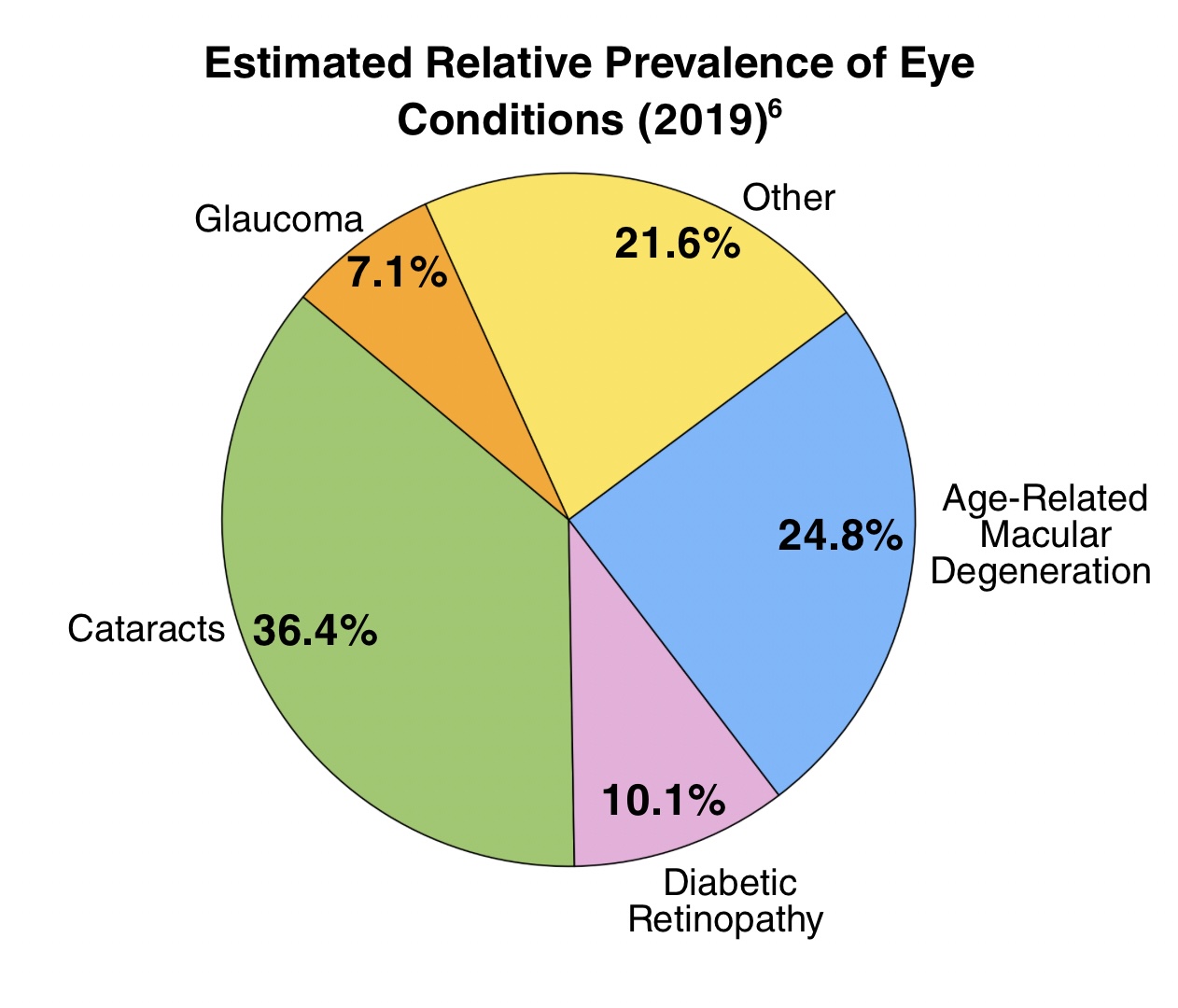If You Could See What I See:
Understanding Age-Related Vision Changes

Welcome to the World of Vision and Aging
Vision is essential to our understanding and navigation of the world. However, changes in our eyesight are common as we age. This website is designed to help increase knowledge of age-related vision changes for individuals experiencing these conditions and those seeking insight into how vision changes as we age.
Since eye health is essential to overall health care, understanding vision loss isn’t just about eyesight; it’s also about dignity, independence, and quality of life. Yet, research shows that individuals with non-visible disabilities, who represent 70–80% of all disabilities¹, face greater prejudice (bias) and less empathy compared to those with visible disabilities². This may be because they are perceived as more competent and have greater control over their condition³.
Vision loss (partial reduction or total loss of vision⁴) is one type of invisible disability, and its effects vary depending on the eye condition. For example, age-related macular degeneration (AMD) primarily leads to central vision loss, glaucoma is usually linked to peripheral (side) vision loss, and cataracts are most often associated with overall vision loss.
The goals are:
- To support those with age-related vision loss, such as those with AMD, glaucoma, and cataracts, by helping them learn more about their condition.
- To help non-visually impaired individuals—students, researchers, family members, caregivers, health professionals, and more—gain an understanding of the different forms age-related visual impairments can take, recognize that not all conditions affect vision in the same way and that different anatomical and function changes lead to distinct perceptual effects.
- Instill the importance of regular eye checkups in addressing vision problems.
This website is rooted in the concept of Knowledge Translation, which refers to the process of ensuring that research, resources and products are accessible, meaningful, and applicable to those who want to learn about them and those who rely on them⁵.
We hope this space helps bridge gaps in understanding, encourages meaningful conversations, and inspires more inclusive, empathetic and vision-aware communities.


Seeing Through Common Vision Loss Myths

Learn About Three Common Age-Related Eye Conditions

References
[1] R. Kelly, N. Mutebi, The Parliamentary Office of Science and Technology (POST Report No. 689), London, UK (2023); https://post.parliament.uk/research-briefings/post-pn-0689/.
[2] M. Granjon, N. Pillaud, M. Popa-Roch, B. Aubé, O. Rohmer, Behav. Sci. 8, 100164 (2025); https://doi.org/10.1016/j.crbeha.2024.100164.
[3] M. Granjon, O. Rohmer, M. Popa-Roch, B. Aubé, C. Sanrey, Group Process. Intergroup Relat. 27, 1403–1422 (2024); https://doi.org/10.1177/13684302231208534.
[4] National Library of Medicine. 2024 Aug 5. MedlinePlus. [accessed 2025 Apr 23]. https://medlineplus.gov/ency/article/003040.htm
[5] Center on Knowledge Translation for Disability and Rehabilitation Research, American Institutes for Research, n.d.; accessed Apr. 16, 2025; https://ktdrr.org/knowledge-translation/
[6] Deloitte Access Economics. Canadian Council of the Blind; 2021. Available from: https://www.fightingblindness.ca/wp-content/uploads/2021/05/Deloitte-Final-Acc-of-VL-and-Blindness-in-Canada-May-2021.pdf
[7] Iowa Department for the Blind. Retrieved April 16, 2025, from https://blind.iowa.gov/resources-and-publications/misconceptions-about-blindness.
[8] Canadian National Institute for the Blind. Retrieved April 16, 2025, from https://www.cnib.ca/en/sight-loss-info/blindness/blindness-myths-and-facts?region=on.
© 2025 Adriana Geremia | Supervised by Dr. Anna Kosovicheva
